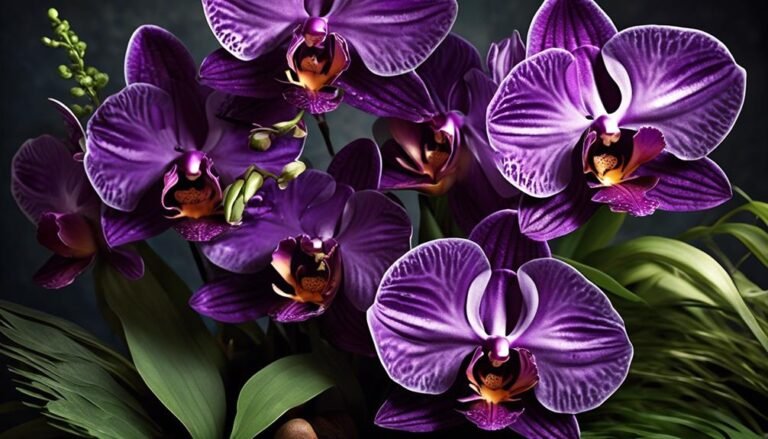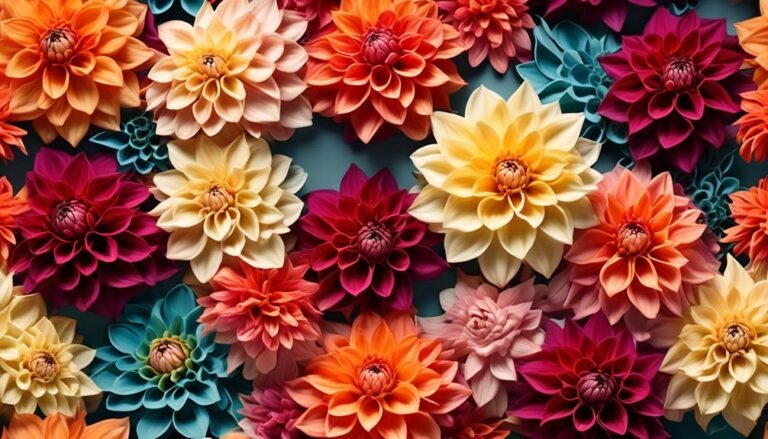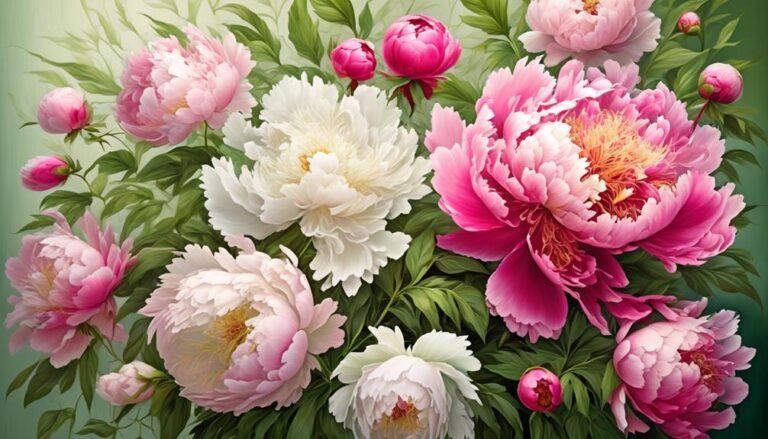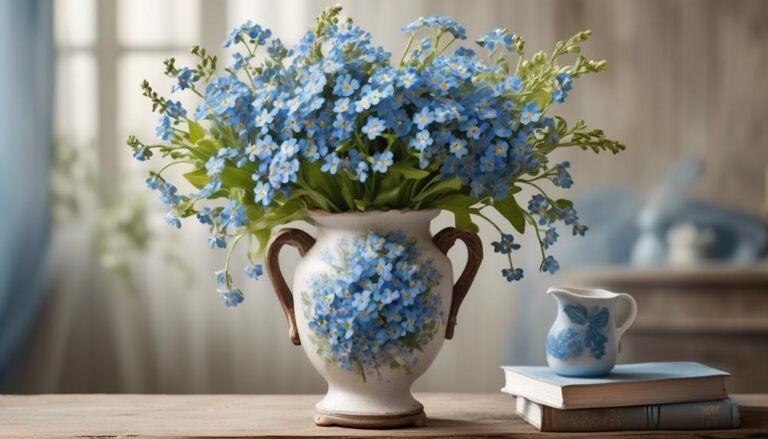Popular Types of Florist Flowers – Sunflower
Sunflowers are a beloved choice among florist flowers, known for their timeless charm and classic appeal. The scientific name of the sunflower, Helianthus annuus, reflects its rich history and cultural significance.
These vibrant blooms come in a variety of colors and possess unique characteristics, making them a versatile option for floral arrangements. With different varieties available, sunflowers are also readily accessible throughout various seasons.
To ensure their longevity and radiance, it's essential to follow proper care tips for these cheerful blooms.
Scientific Name
The sunflower, scientifically known as Helianthus, derives its name from the Greek words helios (sun) and anthus (flower) due to its unique heliotropic behavior of turning towards the sun. This characteristic has captured the fascination of botanists and researchers, making it a remarkable plant in the botanical world. The sunflower is also known by various common names such as 'mirasol' in Spanish-speaking countries and 'tournesol' in French-speaking regions, reflecting its heliotropic nature.
Culturally, the sunflower holds significant symbolism in various societies, symbolizing adoration, loyalty, and longevity. It's also used as a symbol of worship and devotion and holds spiritual significance in some Native American traditions. Additionally, the sunflower seeds are valued for their nutritional and culinary uses in different cultures, adding to its cultural importance.
The sunflower's scientific name, common names, and cultural significance all contribute to its enduring popularity and allure.
Background History
The sunflower has a rich history deeply rooted in the cultural and agricultural practices of indigenous communities in North and Central America. Here's a brief overview of the sunflower's background history:
- Native American Traditions: Native American communities have long revered the sunflower as a symbol of harvest and abundance. It holds cultural significance in various ceremonies, symbolizing adoration, loyalty, and longevity.
- Early Symbolism: The sunflower's vibrant appearance and unique behavior have made it a popular symbol in art and literature, representing vitality, fertility, and the sun itself.
- Cultivation Practices: Indigenous communities were the first to cultivate sunflowers for food and oil, passing down cultivation methods through generations. They recognized the sunflower's value as a nutritional and cultural resource.
- Continued Reverence: The sunflower continues to be a symbol of positivity, strength, and resilience in various cultures, solidifying its position as a cherished botanical icon.
Physical Description
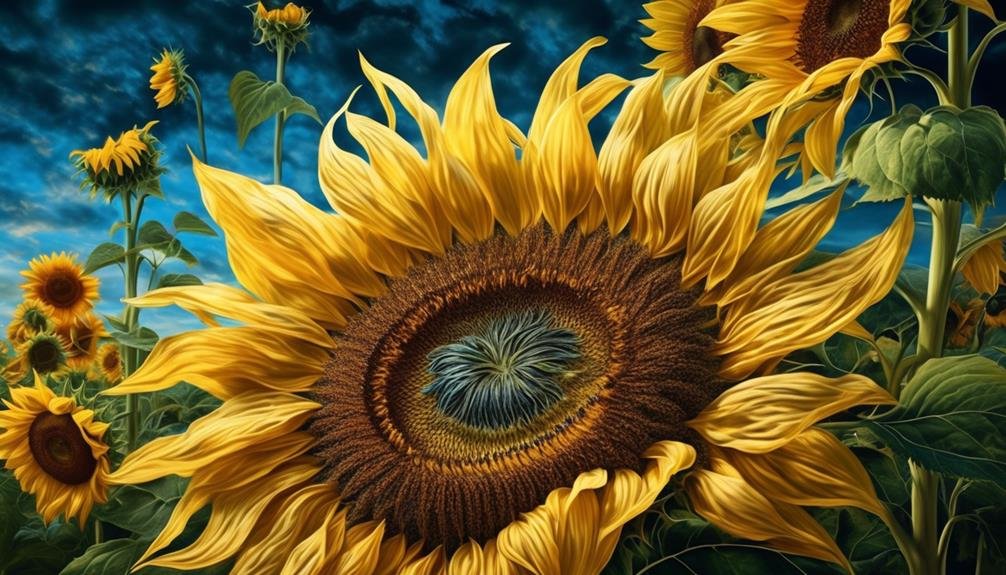
Sunflowers, known for their heliotropic nature, symbolize loyalty and longevity. Their large, bright yellow petals and dark center resemble the appearance of the sun, hence the name. The flower heads can grow up to an impressive 12 inches in diameter, making them a prominent feature in gardens and floral arrangements. Sunflower stems are tall and sturdy, reaching heights of 5 to 12 feet, providing a strong and resilient base for the large flower heads. The leaves of a sunflower are broad, rough, and heart-shaped, with a distinct green color, adding to the overall allure of the plant.
Sunflowers thrive in well-drained soil and require full sun for optimal growth. They're relatively low maintenance and can adapt to various soil types, making them a popular choice for gardeners. Regular watering is essential, especially during dry spells, to ensure healthy and vibrant blooms. Pruning dead or decaying flower heads can promote continuous blooming and prevent the plant from expending unnecessary energy. Understanding the physical attributes and cultivation requirements of sunflowers allows for a deeper appreciation of their beauty and resilience in various gardening and floral contexts.
Colours and Characteristics
Sunflowers are a stunning choice for floral arrangements and gardens, offering a wide range of vibrant colors and unique characteristics. With colors ranging from bright yellow to tawny red, sunflowers add warmth and vibrancy to any setting. Beyond their visual appeal, sunflowers symbolize positivity, strength, admiration, and loyalty, making them a meaningful choice for gifts and celebrations.
Their heliotropic behavior, meaning they track the sun's path, adds an intriguing dynamic to arrangements and landscapes. In Chinese culture, sunflowers represent good luck and lasting happiness, making them perfect for conveying well-wishes and positive sentiments.
Varieties Available

Sunflowers are available in a variety of types, each with distinct features suitable for different purposes. The 'American Giant' is popular for its large 15-inch flower heads, making it great for floral arrangements. Its vibrant yellow petals add a striking touch.
Another notable variety is the 'Moulin Rouge' with deep red or burgundy petals, ideal for creating a dramatic effect in floral displays.
For smaller sunflowers, the 'Music Box' variety is an excellent option, adding a delicate and charming touch to arrangements. 'Lemon Queen' features soft yellow petals, perfect for creating a calm and serene atmosphere.
Sunflowers are generally easy to grow, thriving in full sun and well-draining soil. Different varieties may have specific growing conditions, but in general, they're resilient and adaptable plants.
When selecting sunflowers for floral arrangements, consider the symbolism and meanings associated with each variety. For example, the classic yellow sunflower symbolizes adoration and loyalty, while the red sunflower represents passionate love and admiration. Understanding the symbolism can add depth and significance to floral compositions.
Seasonal Availability
Sunflowers have a seasonal availability that varies depending on geographical location and climate conditions. Understanding their seasonal trends can help florists and enthusiasts plan their floral arrangements accordingly.
Spring: Sunflowers are typically planted in early spring, around March or April, in regions with mild winters and early springs. This allows for a longer growing season and ensures an abundant supply for late spring and summer floral arrangements.
Summer: Sunflowers thrive during the peak of summer, with their blooms reaching their fullest potential during this season. This is the optimal time for harvesting sunflowers for fresh floral arrangements, as they're at their most vibrant and robust state.
Autumn: Sunflowers continue to bloom in early autumn, but their availability may start to decline as the season progresses. Late summer and early autumn are the best times to incorporate sunflowers into floral designs.
Winter: In colder climates, sunflowers aren't typically available during the winter months. However, dried sunflowers can still be used in floral arrangements to add a touch of warmth and cheer to winter displays.
Understanding the seasonal availability of sunflowers is crucial for creating stunning floral arrangements that capture the beauty of each season. Whether it's a spring wedding or a summer bouquet, knowing when sunflowers are at their best ensures that they can be enjoyed in their full splendor.
Care Tips
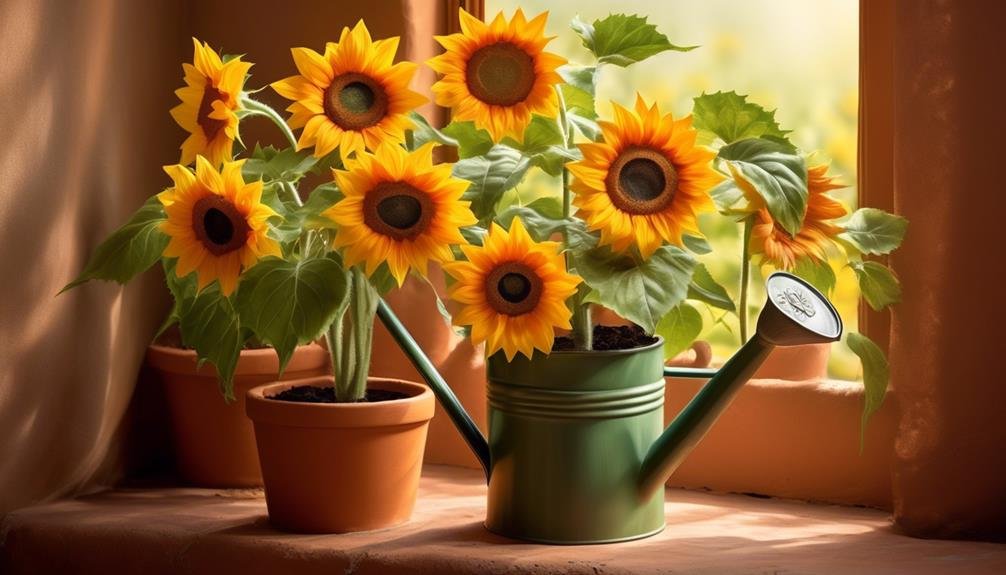
Sunflowers are a vibrant and meaningful addition to any floral arrangement, symbolizing loyalty, adoration, and longevity.
To keep them looking fresh and beautiful, follow these care tips:
- Trim the stems by 2-3cm at an angle to help the sunflowers absorb water more effectively.
- Remove any foliage that will be below the water level in the vase to prevent bacterial growth.
- Keep the water topped up and change it every few days to maintain the sunflowers' health.
- Add flower food to the water for essential nutrients that prolong vase life.
- Remove faded petals and foliage to enhance the arrangement's appearance and maintain the flowers' freshness.
Are Sunflowers and Tulips Compatible in a Floral Arrangement?
When considering a floral arrangement, it’s important to ensure that sunflowers and tulips are compatible. These popular tulip florist flowers can complement each other beautifully, as long as they are arranged thoughtfully. Both flowers have vibrant colors and can add an eye-catching focal point to any arrangement.
Conclusion
Sunflowers (Helianthus annuus) are a popular choice for florists because of their vibrant yellow petals and large, disc-shaped centers. They come in various sizes and shades of yellow, orange, and red, adding a bright and cheerful touch to floral arrangements.
With proper care, including regular watering and sunlight, sunflowers can last for up to a week, making them a great addition to any bouquet or centerpiece.
These versatile blooms are a favorite for adding a pop of color and a touch of sunshine to any floral display.

